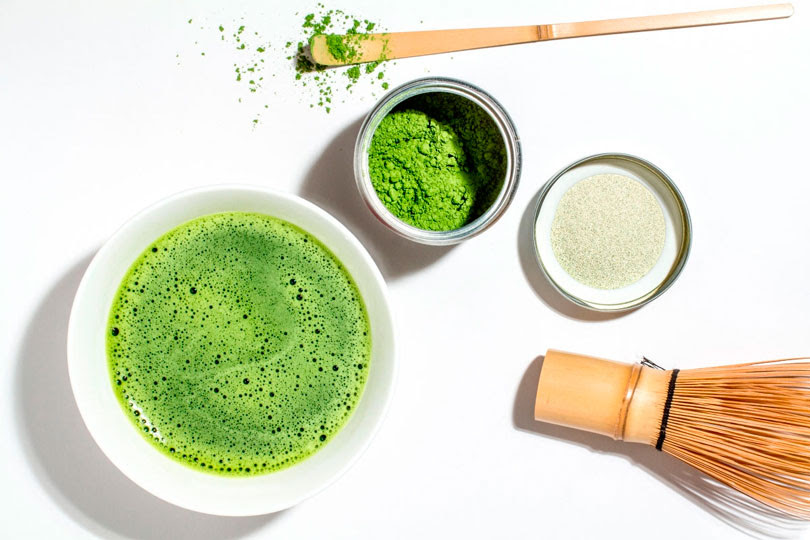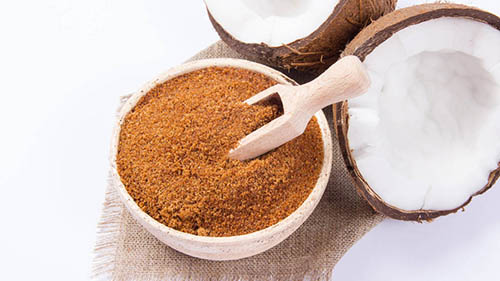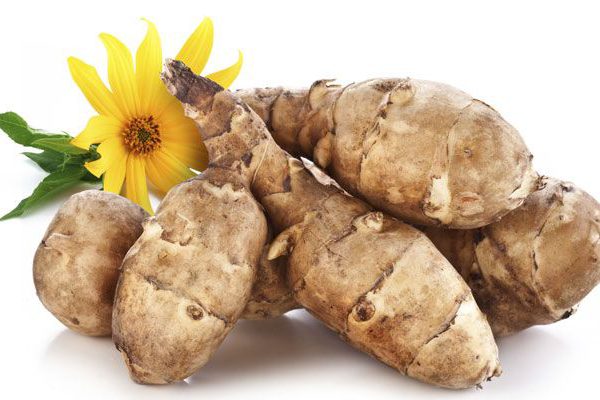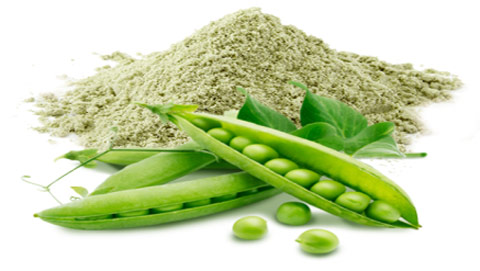Un antiguo secreto. Un polvo mágico.
El té Matcha es un polvo finamente molido de hojas de té especialmente cultivadas. El Té Matcha Ceremonial de SaludViva es un matcha cuidadosamente cultivado con amor que comenzó con una hoja selecta de té.
Una hoja para usar en el ritual diario. Todo comienza con la hoja. Cuanto mejor es la hoja, mejor es el polvo.
La búsqueda del Té Matcha Ceremonia SaludViva fue impulsada por la experiencia sensorial, el sabor, la textura, el color, el olor, el fresco aroma verde… fueron requisitos indispensables en nuestra búsqueda para encontrar el matcha de mayor calidad del mundo. Después de probar las hojas de té matcha de varios agricultores de Japón y China, finalmente encontramos la que consideramos la mejor fuente.
Nuestro té Matcha de grado ceremonial, nació en el gran entorno natural de Kagoshima, con su clima brumoso, el agua pura, el suelo rico y el aire limpio, estas condiciones dieron origen a este té estilo Usucha que se utiliza en la ceremonia del té por su delicado y suave sabor aterciopelado. De gran calidad, es 100% orgánico; se elabora a partir de las hojas recién brotadas y se recolecta manualmente; su sabor dulce y afrutado y su color jade son característicos. Ha sido cuidosamente molido a la piedra y procesado en frio para no dañar sus nutrientes y mantener su excelente aroma. Fue considerado en la antigüedad como elixir de los inmortales
Durante siglos, los maestros Zen se han beneficiado de los poderes calmantes de la mente del matcha: una mente focalizada,una energía calmada y una extraordinaria resistencia. Y el matcha ha sido un elemento básico de las antiguas ceremonias y rituales japoneses.
Preparación del te matcha ceremonial
Los ingredientes
- 1/2 a 1 cucharadita de Tea Matcha SaludViva (grado ceremonial)
- 1 taza de agua caliente
- Edulcorante natural a tu elección.
Preparación:
1. Primero, necesitarás un batidor de bambú. Puedes comprar uno en tiendas de cocina asiática. Prepare su batidor antes de comenzar sumergiendo sus dientes en un vaso lleno de agua tibia. Este proceso hará que su batidor sea lo más flexible posible para hacer matcha.
2. A continuación, mida la cantidad de polvo de té matcha que utilizará, aproximadamente ½ cucharadita de matcha de grado ceremonial por porción. Tamizarlo a través de un colador de malla fina. Rompe cualquier grupo pequeño para que tengas una mezcla suave y cremosa cuando hayas terminado.
3. Poner el agua a hervir. Necesitará aproximadamente o una taza de agua por cada porción de matcha. Mientras el agua se calienta, agregue el polvo de matcha tamizado a su tazón o taza. Después de que hierva el agua, déjala enfriar justo por debajo de la ebullición, o alrededor de 76-78 grados centigrados. Una vez que el agua esté «fuera de ebullición», viértela en el recipiente con el polvo de matcha.
4.Ahora estás listo para batir. Agite vigorosamente la parte superior de su tazón o taza de matcha con el batidor de bambú, moviéndolo hacia adelante y hacia atrás tan rápido como pueda durante unos 40 segundos. El matcha debe comenzar a verse como una sustancia espumosa y espumosa. Continúe batiendo, asegurándose de no hundir el batidor en el fondo del tazón y que permanezca lo más cerca posible de la parte superior. Una vez que vea formarse una espuma espesa , ¡el Té matcha estará listo para beber!
Rendimiento: 1 bebida
Tamaño de la porción: unos 235-250 ml.
Ahora examinemos los beneficios de Matcha sobre los beneficios de café:
EL TE MATCHA PROPOCIONA ENERGIA TODO EL DÍA
 •El té Matcha contiene L-teanina, un aminoácido que ayuda a su cuerpo a procesar la cafeína de manera diferente y a crear un estado de alerta tranquilo. Si bien una porción de matcha tiene mucha menos cafeína que el café, proporciona un impulso de energía menos agitado y más sostenido, sin que se produzca una caída al final. La L-teanina también mejora el enfoque y te ayuda a concentrarte.
•El té Matcha contiene L-teanina, un aminoácido que ayuda a su cuerpo a procesar la cafeína de manera diferente y a crear un estado de alerta tranquilo. Si bien una porción de matcha tiene mucha menos cafeína que el café, proporciona un impulso de energía menos agitado y más sostenido, sin que se produzca una caída al final. La L-teanina también mejora el enfoque y te ayuda a concentrarte.
• El té Matcha presenta niveles mucho más altos de antioxidantes, que protegen contra las enfermedades y el envejecimiento. Con 1573 unidades ORAC (capacidad de absorción de radicales de oxígeno) por porción, es una de las mejores fuentes de antioxidantes del mundo.
• El té Matcha ayuda a estimular el metabolismo y quema la grasa al aumentar la termogénesis (hasta un 40%), la velocidad a la que el cuerpo quema calorías.
• El té Matcha contiene catequinas, un tipo único de antioxidante con potentes propiedades anti cancerígenas .
• El té Matcha es más fácil de hacer. No se requiere máquina de vapor o ningún tipo de aparato.
• El té Matcha proporciona fibra y nutrientes que el café no, como la clorofila, la vitamina A y la vitamina C.
Ha visto los pros y los contras. Ahora eche un vistazo a los datos comparativos de matcha contra el café:
 La ceremonia del té de Matcha: un ritual tradicional japonés
La ceremonia del té de Matcha: un ritual tradicional japonés
En la cultura japonesa, el té verde matcha es mucho más que una bebida. La ceremonia del té matcha ha sido una parte integral de la cultura tradicional japonesa durante siglos. Una celebración tranquila realizada con gracia y belleza, el ritual del té matcha es una experiencia de unión, de atención plena, de respeto y de enfocarse en el aquí y ahora.

¿Cuál es la diferencia entre el té matcha y el té verde?
El te Matcha es un grado muy superior de té que contiene hasta 15 veces más nutrientes que el té verde de hojas sueltas. Debido a que el polvo de matcha representa la hoja de té molida en su totalidad, usted obtiene los beneficios de los nutrientes y vitaminas de la hoja de té en su totalidad. En comparación, con las hojas que se utilizan en la elaboración del té verde, sus nutrientes y vitaminas, como las vitaminas C, se quedan en la hojas de té que generalmente se descartan.
¿Qué tipos de té se utilizan durante la ceremonia del té?
El tipo de matcha utilizado en este ritual es el polvo de matcha de grado ceremonial, utilizado específicamente para beber y en los lattes. El matcha de grado ceremonial es específicamente distinto en el color y en el tacto. Debe tener un color verde vibrante y un olor ligero, fresco y casi similar al de la hierba. También debe ser extremadamente fino al tacto y sentirse sedoso y suave.
Hay dos tipos de elaboración del matcha conocidas como: usucha (té fino) al que pertenece el de SaludViva y koicha (té grueso). Usucha se hace típicamente a partir de las hojas de los arbustos de té que tienen menos de 30 años, y el koicha se hace a partir de la primera cosecha de plantas que tienen más de 30 años. El que se usa generalmente para hacer un té más espeso, más denso y más fuerte es el koicha, y el que se utiliza para hacer un té más fino y más suave el usucha.
¿Quién es el anfitrión en la ceremonia del té matcha?
No es necesario que seas un monje budista o un maestro zen para organizar una ceremonia del té, pero en Japón, el ritual del té matcha requiere una serie de movimientos precisos de las manos y una elegante coreografía. Los estudiantes se reúnen en círculos especiales y clubes de té para aprender cómo organizar la ceremonia, que a menudo requiere horas de preparación. Muchos japoneses también han estudiado y realizado la ceremonia del té matcha en sus hogares.
¿Dónde se realiza la ceremonia del té matcha?
Las ceremonias del té se pueden llevar a cabo en cualquier lugar, ya que la decoración requerida es muy simple y minimalista. Colgar pergaminos con citas populares y proverbios conocidos en un lugar común, y ofrecer sabiduría y consejos a los participantes. También se pueden utilizar arreglos florales simples.
¿Cómo comienza la ceremonia del té?
Antes de que comience la ceremonia, los invitados se reúnen en una sala especial preparada por el anfitrión, conocida como machiai. Después de que todos hayan llegado, los invitados caminarán por un terreno cubierto de rocío, un ritual de limpieza que simboliza la eliminación del polvo del mundo. Para purificarse aún más para la ceremonia que se avecina, los huéspedes se lavan las manos y la boca con agua limpia de un recipiente de piedra.
Una vez que se completan los ritos de purificación, el anfitrión saluda a cada invitado con una reverencia silenciosa cuando entran al sitio de la ceremonia del té. Dependiendo de la formalidad de la ceremonia, ahora se pueden servir pequeños dulces o incluso una comida de tres platos antes de que se sirva el té. A continuación, el anfitrión prepara adecuadamente los utensilios del té, teniendo mucho cuidado de asegurarse de que estén impecablemente limpios y sin defectos.
Finalmente, es hora de preparar el té matcha. El anfitrión agrega una a tres cucharadas de polvo de té verde matcha en el tazón del grupo (media cucharadita si se trata de Matcha de Grado Ceremonial para una sola persona), seguido de una pequeña cantidad de agua caliente. Usando un batidor de bambú tradicional, el anfitrión agita rápidamente la mezcla para crear una pasta verde brillante. Cuando la pasta en polvo de matcha alcanza la consistencia correcta, se agrega agua caliente adicional a la mezcla para producir un té espeso y rico.
A continuación se muestra un enlace para visualizar un video de una ceremonia de té matcha con un enfoque en los pasos descritos
¿Cuándo toman el té los invitados?
El polvo de matcha ahora se ha transformado en un té cubierto de espuma. Cada invitado toma una trago del tazón, una por una, asegurándose de limpiar el tazón antes de pasarlo. Después de que todos hayan bebido el té, se inspeccionan los utensilios que se usaron. Una vez completada la ceremonia del té termina con una reverencia y los invitados regresan a casa.
¿Por qué es importante la ceremonia de matcha?
La tradicional ceremonia del té japonesa es un símbolo de paz, armonía y felicidad. Es una experiencia espiritual que demuestra respeto a través de las buenas maneras y la gracia, que son facetas integrales de la cultura japonesa. La ceremonia del té matcha también promueve la unión social, y brinda una ocasión para que todos se relajen y se diviertan lejos de las preocupaciones del mundo exterior.
ENGLISH – EN INGLES
What is Ceremonial SaludViva Matcha tea?
An Ancient Secret. A Magical Powder.
Matcha is finely ground powder of specially grown tea leaves. SaludVuiva Matcha is a carefully-sourced, love-infused matcha that all began with an selected leaf.
A leaf to use in daily ritual, to be a cornerstone of intention in our days.
It all begins with the leaf. The better the leaf, the better the powder.
The search for SaludViva Matcha was driven by the sensory experience. The taste, the texture, and the color, the smell the fresh green aroma to find the highest quality, most aligned matcha in the world. After sampling matcha leaves from Japan and China farmers, we finally found the perfect source.
Our ceremonial grade Matcha tea was born in the great natural environment of Kagoshima, with its hazy climate, pure water, rich soil and clean air, these conditions gave rise to this Usucha style tea used in the tea ceremony for its delicate and soft velvety taste. Of great quality, it is 100% organic; it is made from freshly sprouted leaves and collected manually; its sweet and fruity taste and its jade color are characteristic. It has been carefully ground to the stone and cold processed to avoid damaging its nutrients and maintaining its excellent aroma. It was considered in antiquity as the elixir of the immortals
For centuries, Zen masters have benefited from the mind-calming powers of matcha: a focused mind, calm energy, and remarkable stamina. And matcha has been a staple of ancient Japanese ceremonies and rituals for just as long.
Preparation of the matcha ceremonial tea
Ingredients
- 1/2 to 1 teaspoon SaludViva Matcha Green Tea Powder (Ceremonial Grade)
- 1 cup hot water
- Your choice, natural sweetener
Directions:
1.First, you’ll need a bamboo whisk. You can buy one online, or at most kitchen and cooking stores. Prepare your whisk before you start by inverting its tines into a glass filled with warm water. This process will make your whisk as flexible as possible for making matcha.
2.Next, measure out the amount of matcha tea powder that you will be using, about ½ teaspoon per serving of ceremonial grade matcha per serving. Sift it through a fine mesh strainer. Break up any tiny clumps so that you’ll have a smooth, creamy mixture when you are finished.
3.Set fresh water on to boil. You’ll need about eight ounces (one cup) of water for every serving of matcha. While the water heats up, add your sifted matcha powder to your bowl or cup. After the water boils, let it cool to just below boiling, or around 170 degrees Fahrenheit. Once the water is just “off the boil,” pour it in to the bowl with the matcha powder.
4.Now you’re ready to whisk. Vigorously stir the top of your bowl or cup of matcha with the bamboo whisk, moving it back and forth as fast as you can for about 40 seconds. The matcha should start to look like a frothy, foamy substance. Continue whisking, making sure that you don’t plunge the whisk into the bottom of the bowl – stay as close to the top as you can. Once you see a thick froth developing, the matcha is ready to drink!
Yield 1 Drink
Serving size: 8 ounces
Now let’s examine Matcha Benefits over Coffee Benefits
MATCHA PROVIDES ENERGY ALL DAY

•Matcha contains L-Theanine, an amino acid that helps your body to process caffeine differently and create a state of calm alertness. While one serving of matcha has much less caffeine than coffee, it provides a less jittery, more sustained energy boost – with no crash at the end. L-Theanine also improves focus and helps you concentrate.
• Matcha features much higher levels of antioxidants, which protect against disease and aging. At 1573 ORAC (oxygen radical absorbance capacity) units per serving, it’s one of the very best sources of antioxidants in the world.
• Matcha helps boost metabolism and burns fat by increasing thermogenesis (up to 40%), the rate at which your body burns calories.
• Matcha contains catechins, a unique type of antioxidant with potent cancer-fighting properties.
• Matcha is easier to make. No fancy French press, steam machine or appliance is required.
• Matcha provides fiber and nutrients that coffee does not, including chlorophyll, vitamin A and vitamin C.
You’ve heard the pros and cons – now take a look at the hard data on matcha vs. coffee:
Honoring the Matcha Tea Ceremony: A Traditional Japanese Ritual
In Japanese culture, matcha green tea is much more than a drink. The matcha tea ceremony has been an integral part of the traditional Japanese culture for centuries. A quiet celebration performed with grace and beauty, the matcha tea ritual is a bonding experience of mindfulness, respect and a focus on the now

What is the difference between matcha powder and regular loose leaf green tea?
MATCHA TE is a far superior grade of tea containing up to 15 times more nutrients than loose leaf green tea. Because matcha powder represents the ground tea leaf in its entirety, you get the benefits of the whole tea leaf’s nutrients and vitamins. In comparison, in regular brewed green tea leaves, its nutrients and vitamins such as vitamins C gets left behind in the tea leaf and are usually discarded.
What types of tea are used during the tea ceremony?
The type of matcha used in this ritual is the ceremonial grade matcha powder, specifically used for drinking and lattes. Ceremonial grade matcha is specifically distinct from its color to how it feels. It should have a vibrantly green color and smell light, fresh, and slightly grass like. It should also be extremely fine to the touch and feel silky and smooth like eye shadow.
There are two types of matcha preparation known as usucha (thin tea) our brand SaludViva uses this preparation, and koicha (thick tea). Usucha is typically made from the leaves of tea bushes that are less than 30 years old, and koicha is made from the first harvest of plants that are a over 30 years old.
The one that is generally used to make a tea thicker, denser and stronger is the koicha, and the one used to make a tea thinner, weaker and softer the usucha.
Who hosts the matcha tea ceremony?
You don’t have to be a Buddhist monk or Zen master to host a tea ceremony, but in Japan the matcha tea ritual requires a series of precise hand movements and graceful choreography. Students gather in special circles and tea clubs to learn how to host the ceremony, which often requires hours of preparation. Many Japanese have also studied and performed the matcha tea ceremony in their homes.
Where is the matcha tea ceremony performed?
Tea ceremonies can be held just about anywhere, as the required decoration is very simplistic and minimalist. Hanging scrolls that feature popular quotes and well-known proverbs are commonplace, and offer thoughtful wisdom and advice to the participants. Simple flower arrangements may also be used.
How does the tea ceremony begin?
Before the ceremony begins, guests gather in a special room set up by the host, known as a machiai. After everyone has arrived, the guests will walk across a dew-covered ground, a cleansing ritual that symbolizes the removal of dust from the world. To further purify themselves for the ceremony ahead, guests wash their hands and mouths using clean water from a stone basin.
Once the purification rites are complete, the host greets each guest with a silent bow as they enter the tea ceremony site. Depending on the formality of the ceremony, small sweets or even a three-course meal may now be served prior to the tea being poured. Next, the host properly prepares the pouring utensils, taking great care to ensure they are immaculately clean and unblemished.
Finally, it’s time for the matcha tea powder. The host gracefully adds one to three scoops of matcha green tea powder into the group bowl, (half scoop of Ceremonial Grade Matcha Tea is only for one person), followed by a small amount of hot water. Using a traditional bamboo whisk, the host rapidly stirs the mixture to create a bright green paste. When the matcha powder paste reaches the right consistency, additional hot water is whisked into the mix to produce a thick, rich tea.
Below is a link to see a video demonstration of a matcha tea ceremony with a focus on the steps described above.
When do the guests drink the tea?
The matcha powder has now been transformed into a foam-topped tea. Each guest takes a drink from the bowl, one by one, ensuring to clean the bowl before passing it on. After everyone has sipped the tea, they are a chance to inspect the utensils that were used. Once completed, the tea ceremony ends with a bow and the guests return home.
Why is the matcha ceremony important?
The traditional Japanese tea ceremony is a symbol of peace, harmony and happiness. It’s a spiritual experience that demonstrates respect through etiquette and grace, which are integral facets of Japanese culture. The matcha tea powder ceremony also promotes social bonding, and provides an occasion for everyone to relax and enjoy themselves away from the worries of the outside world.




Sin Comentarios